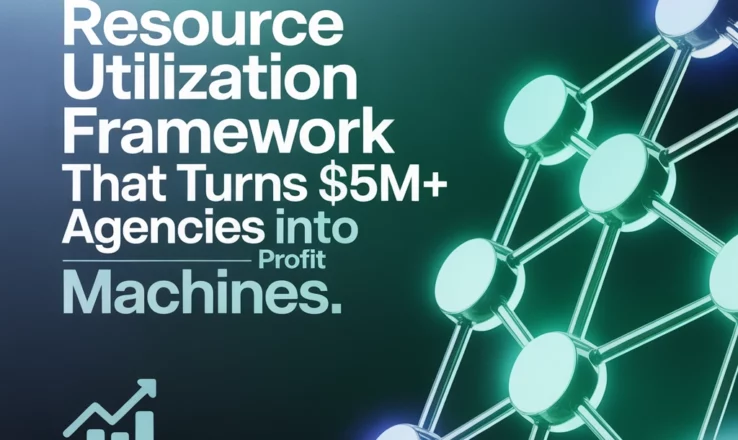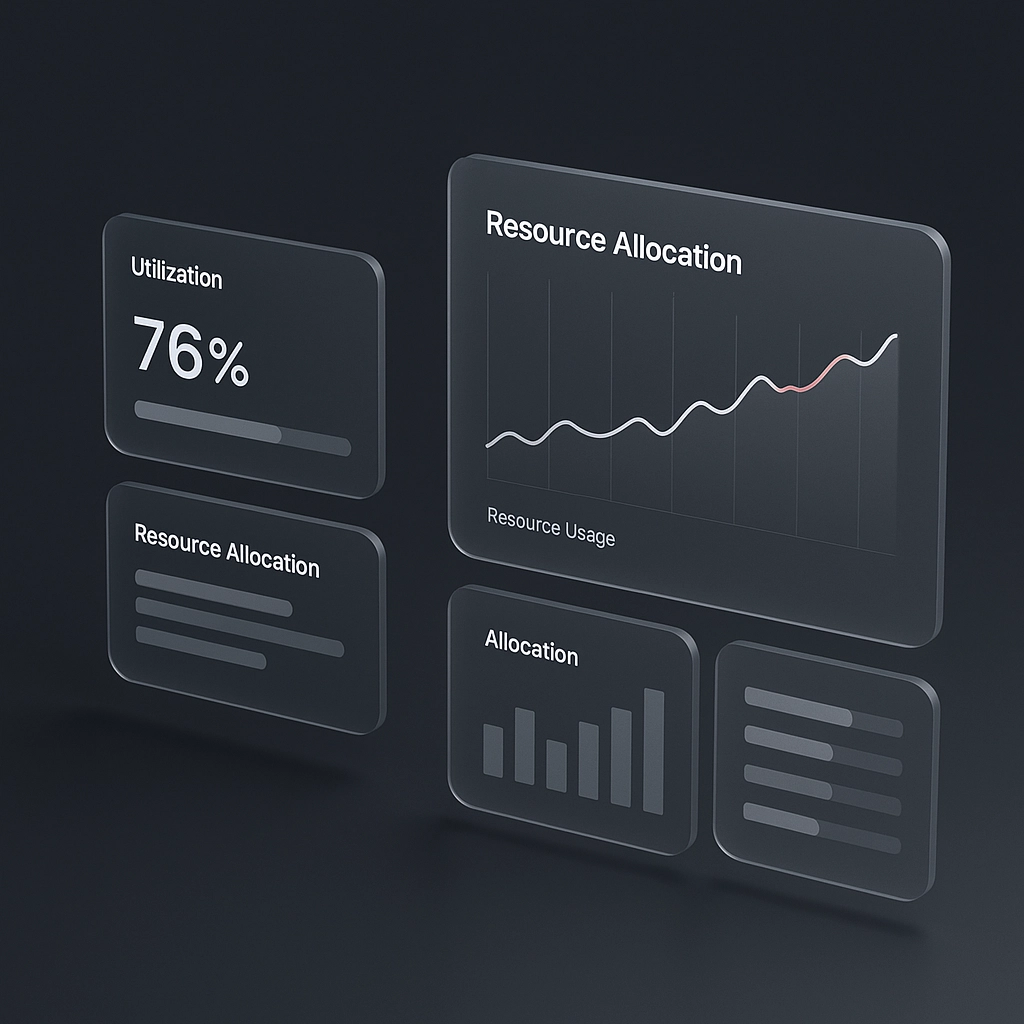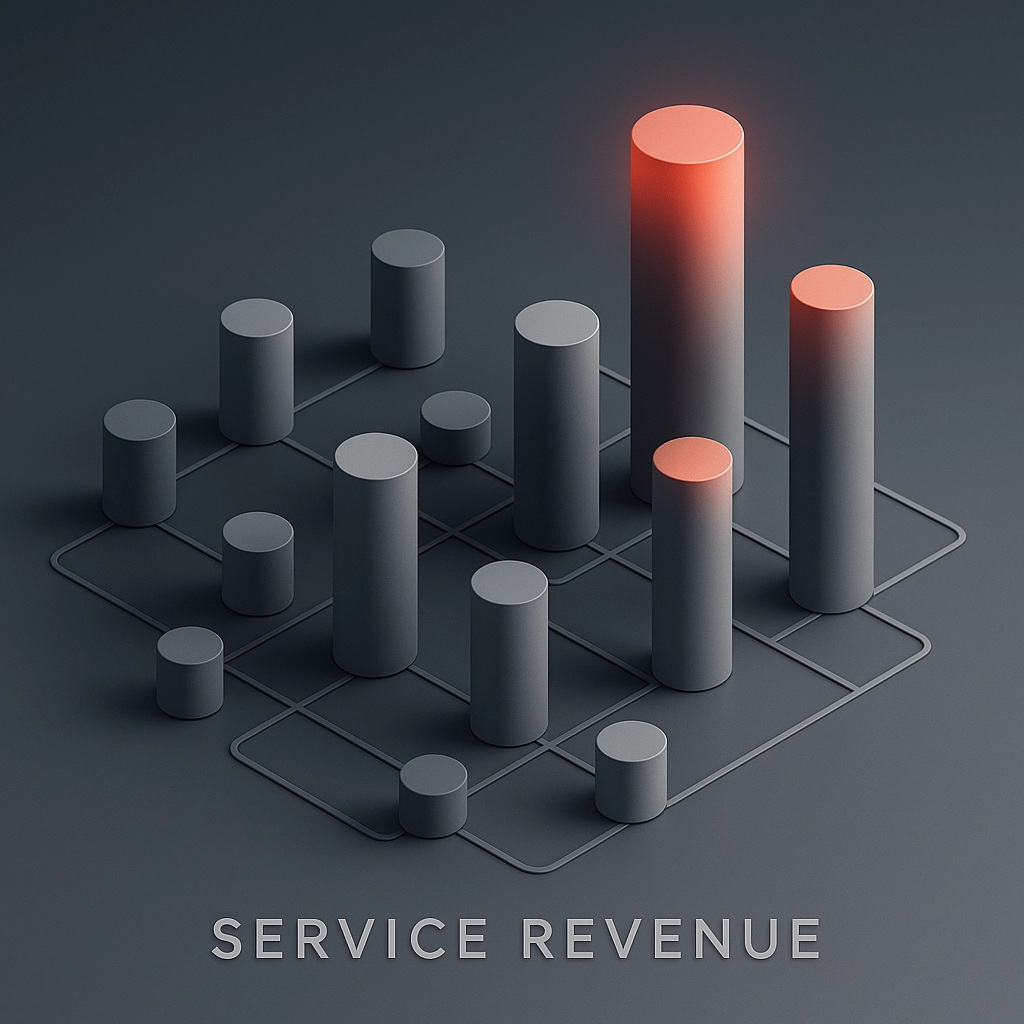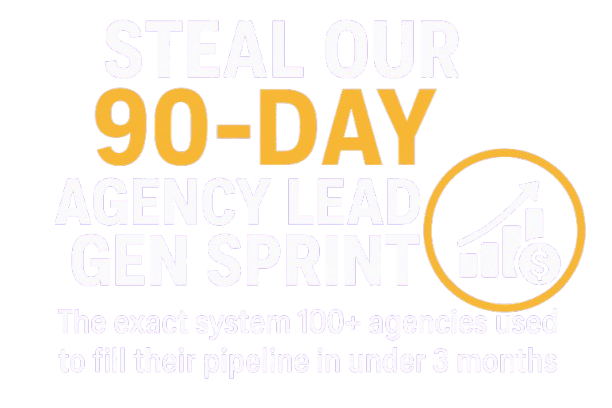
Here's the hard truth: Most $5M+ agencies are hemorrhaging profit through poor resource utilization. You've scaled revenue, but your margins are stuck because you're still running operations like a startup. Today, we're fixing that with a framework I've developed working with agencies that have transformed their profitability overnight.
This isn't fluffy theory—it's a systematic approach that's added $300K-$800K in annual profit for agencies that implement it correctly. Roll up your sleeves. We're diving deep.
The Resource Utilization Reality Check
First, calculate your current utilization rate. Take your total billable hours last month and divide by total available hours across your team. If you're below 75%, you're leaving serious money on the table. Most agencies I work with start around 65-68% and think that's normal. It's not.
Here's what you need to track immediately:
- Billable utilization rate (billable hours ÷ available hours)
- Revenue per hour per employee (total revenue ÷ total employee hours)
- Project delivery efficiency (planned hours vs. actual hours)
- Resource allocation accuracy (how often you nail your staffing predictions)
Don't guess at these numbers. Get exact data. Set up tracking in your project management system today—I recommend Monday.com or Asana for agencies your size. Without accurate data, you're optimizing blind.
The Five-Tier Resource Optimization Framework
Tier 1: Predictive Resource Planning
Start by building a 90-day resource forecast. This isn't about guessing—it's about creating a systematic prediction model based on your historical data and confirmed pipeline.
Here's your step-by-step process:
Week 1: Audit your last 12 months of project data. Document actual hours vs. estimated hours for every project type. You'll discover patterns—maybe your web development projects consistently run 20% over estimate, while content projects come in under budget.
Week 2: Map your current pipeline with probability weightings. A prospect in final negotiations gets 80% probability. A warm lead gets 30%. Create monthly resource demand projections based on these weighted probabilities.
Week 3: Build buffer capacity into your planning. I recommend 15% buffer for agencies your size. This accounts for scope creep and unexpected opportunities without killing utilization.
The payoff? One agency I worked with increased their quarterly revenue by $180K just by accurate forecasting that let them take on three additional clients they would have previously turned away.

Tier 2: Dynamic Resource Allocation
Now we're getting tactical. You need real-time resource allocation that adjusts as projects evolve. Static staffing charts kill profitability at scale.
Implement this allocation matrix:
High-Skill, High-Demand Resources: Your senior strategists and lead developers. Schedule these folks first, then build projects around their availability. Never let these resources sit idle—their hourly value is too high.
Mid-Skill, Flexible Resources: Your project managers and intermediate specialists. These are your utility players. Cross-train them on multiple service areas so you can shift them based on demand spikes.
Specialized Resources: Your niche experts—the PPC specialist who only does e-commerce, the video editor who handles brand campaigns. Batch their work to maximize efficiency and minimize context switching.
Track allocation changes weekly. When a project shifts timeline, immediately reassess and redeploy affected resources. Speed here is everything—delays compound into massive utilization losses.
Tier 3: Systematic Bottleneck Elimination
Identify your constraint resources—the people or processes that limit your capacity. In most agencies, it's either creative review cycles or senior-level strategy work.
Map your workflow dependencies. Use a simple exercise: For each major service you offer, list every person who needs to touch the work before it's client-ready. The person who appears most frequently across services is likely your bottleneck.
Here's how to systematically eliminate these constraints:
Document and delegate decision-making authority. If your creative director is reviewing every piece of content, create approval criteria they can teach to junior team members. Start with low-risk content and expand gradually.
Batch similar work types. Instead of your strategist jumping between SEO audits, content strategies, and social media plans throughout the day, block time for each service type. Context switching is killing your efficiency.
Create standardized processes. Build templates, checklists, and standardized deliverables for every service you offer. The goal is reducing senior-level involvement in routine work by 40%.
Tier 4: Revenue per Resource Optimization
This is where profitability accelerates. You need to maximize the revenue generated per hour of team capacity.
Start by calculating revenue per hour for each service line:
- SEO services: $X per hour
- Paid media management: $Y per hour
- Content creation: $Z per hour
Now identify your highest-margin services and systematically shift capacity toward them. If your SEO services generate $200/hour and content creation generates $80/hour, you need a strategic reallocation plan.
Upsell existing clients into your high-margin services. It's easier than finding new clients and immediately improves utilization metrics.
Sunset low-margin work gradually. Give existing clients notice, but stop accepting new projects in services that don't meet your minimum hourly threshold.
Premium pricing strategies for specialized work. If you're the only agency in your market offering technical SEO audits for SaaS companies, price accordingly.

Tier 5: Predictive Scaling
The final tier is building systems that scale resource utilization as you grow. This is where most agencies fail—they optimize for their current size but can't maintain efficiency as they add team members.
Build utilization triggers that automatically initiate hiring processes. When your overall utilization hits 82% for three consecutive weeks, start recruiting. When it drops below 75% for two weeks, pause hiring and analyze capacity.
Create skill development pipelines that move junior resources toward high-value work. Your junior PPC specialist should have a clear path to managing enterprise accounts within 18 months.
Implement cross-training matrices that prevent single points of failure. Every client should have primary and backup resources assigned across all service areas.
Implementation Timeline and Milestones
Month 1: Complete your resource audit and implement tracking systems. Set up your forecasting model and test it against current pipeline.
Month 2: Deploy dynamic allocation processes and identify bottlenecks. Start documentation of standardized processes.
Month 3: Optimize service mix for revenue per hour. Begin systematic upskilling of junior team members.
Months 4-6: Scale systematically while maintaining utilization targets above 78%.
Track these KPIs weekly:
- Overall utilization rate
- Revenue per employee hour
- Client project satisfaction scores
- Employee utilization variance (how evenly work is distributed)
The Profit Transformation Results
When you implement this framework correctly, expect these outcomes:
15-25% increase in billable utilization within 90 days through better planning and allocation.
20-35% improvement in project margins by optimizing your service mix and eliminating bottlenecks.
Reduced overtime and burnout because you're working systematically instead of reactively.
The agencies that execute this framework see profit increases of $300K-$800K annually, not through raising prices or finding new clients, but through maximizing what they already have.
This framework works because it's systematic, data-driven, and designed specifically for agencies that have reached scale. You have the revenue—now optimize the operations to match. Start with Tier 1 this week. Your margins will thank you.
Stop leaving money on the table through poor resource management. The framework is proven. The only question is whether you'll implement it.
